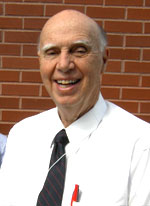Year: 2006
Light wave discontinuities, readily seen by graphically considering spherical waves from a single light source moving over two frames, are corrected only by replacing SRT's two principles with a third frame (aether?) relative to which light speed is constant [1]. Universal time (i.e., that light passes at the same rate anywhere in the universe) also appears required. If so, observers at the light source and receiver (and any other place not on that 3rd frame) must see a variable speed of light energy transmission-- but what is the nature of that transmission? Might we use light energy periodicities rather than light waves or quanta? If so, might there be a wide spectrum of frequencies corresponding to a wide spectrum of periodicities in light transmission. And how, then, are we to measure speed? and of what? and relative to what? If the nature of light speed is uncertain, how then are the 'light wave equations' to be written, e.g., how do we express the relationship between periodicity (frequency) and distance between light energy peaks (at each periodicity)? Looking back now, we see that Michelson-Morley experiment was an invalid instrument to measure that. It was also invalid in SRT because both its source and receiver were in the same frame, hence never would measure length contraction per SRT which expected such changes in the 'moving' frame. There are also valid questions regarding the use of light speed c in electrodynamics and in astronomy. All of which arise from the simple graphical rejection of non-aether concepts in optical-kinematics.
- N. E. Munch, "Light Wave Discontinuities and their Solution", Proceedings of the NPA, V2, N2, pp. 118-124 (2005).


